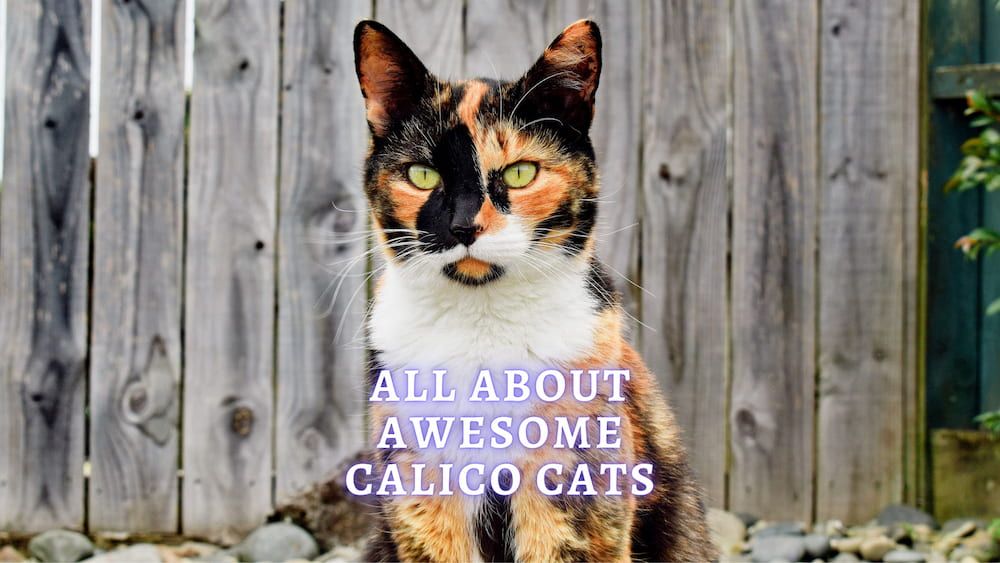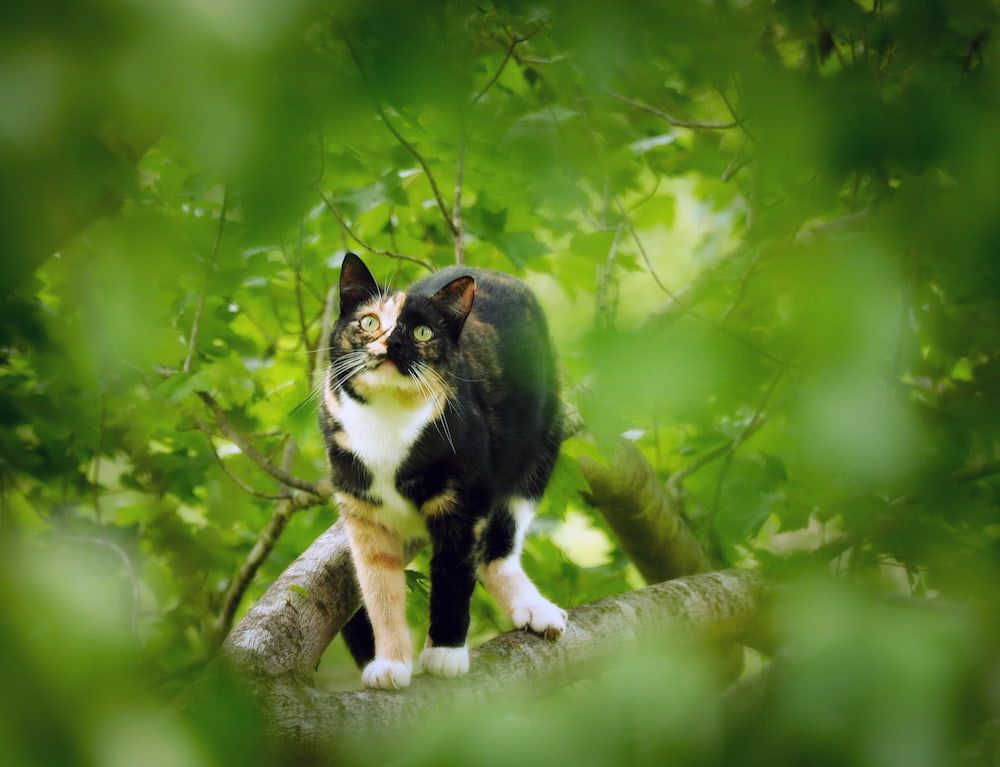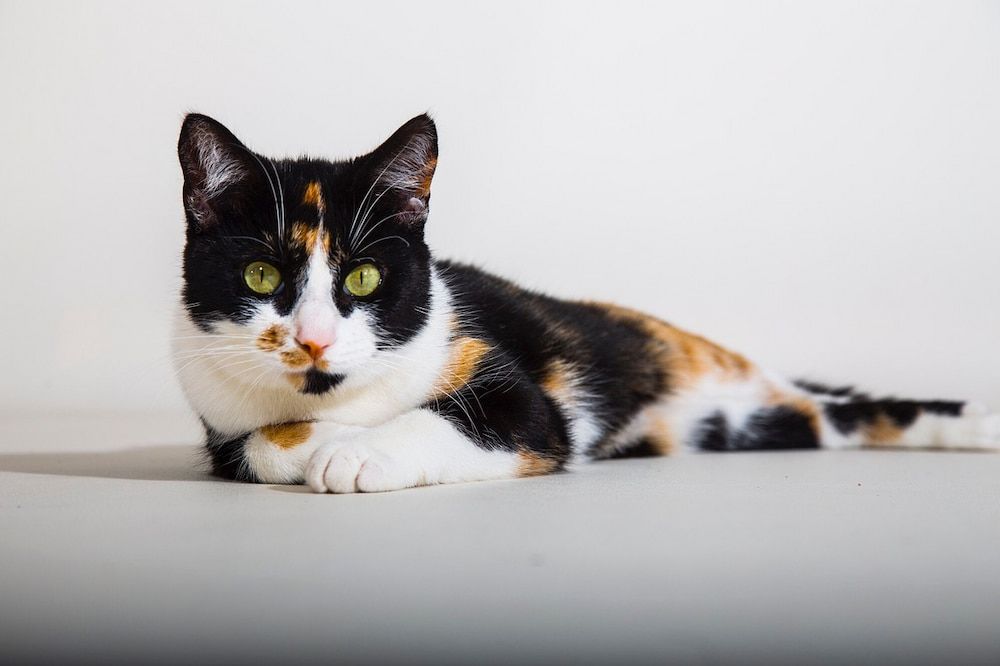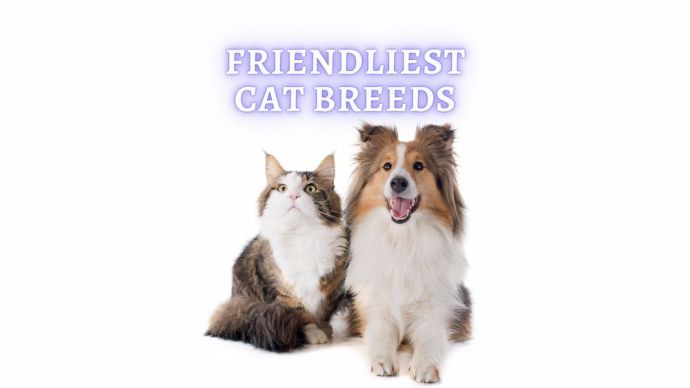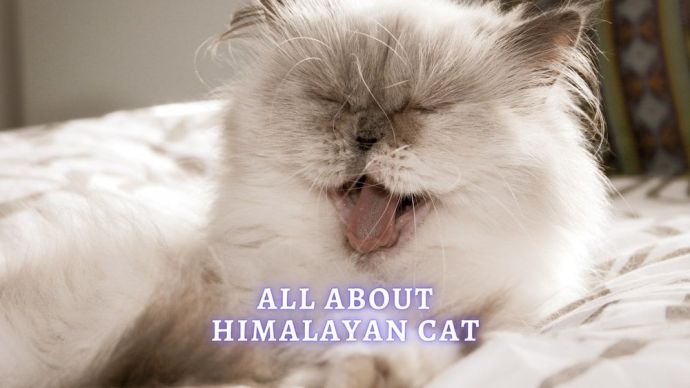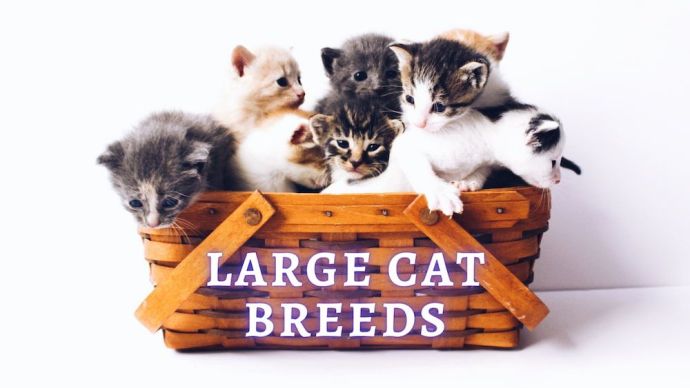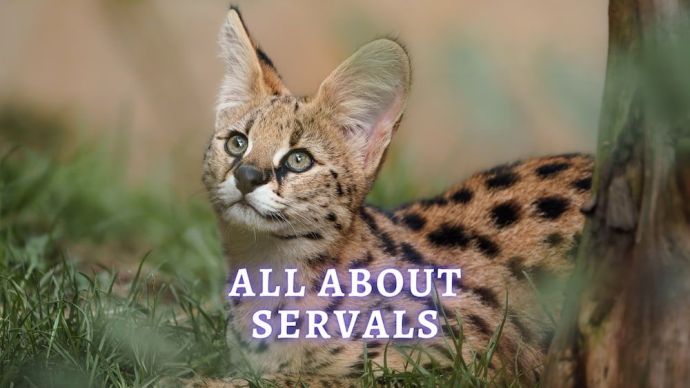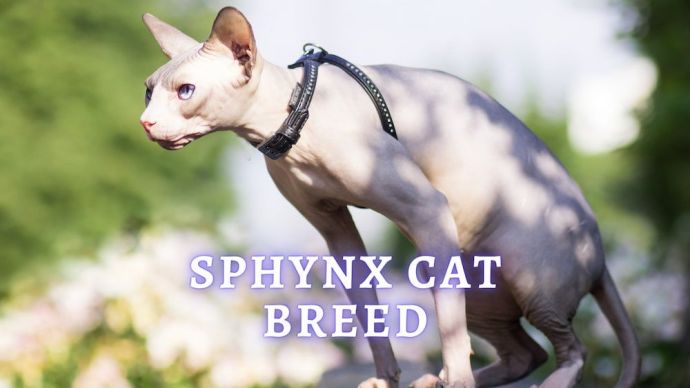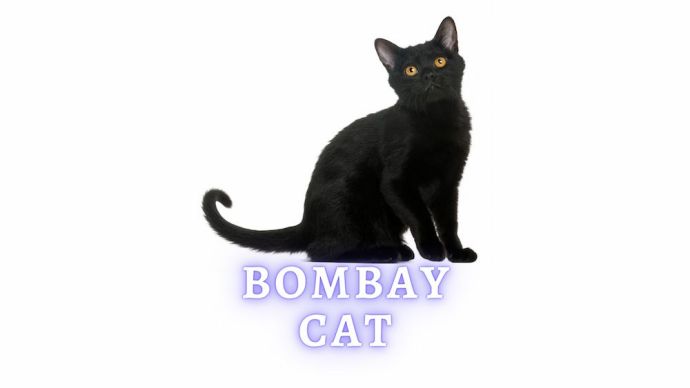Calico Cat: What Is So Special About Calico Cats?
Written by:
Author: Scott Jeffrey
Scott is a professional blogger with 12+ years of experience in writing, and holds an MA in anthropology. He has two cats as housemates. Also, Scott is passionate to research on pet-related topics such as dog training, puppy feeding, and cat health.
View all 63 articlesLearn about our editorial process and veterinary review board.
Viewed: 110
Updated on: 06/27/2023
Calico cats are some of the most loved feline varieties in the world, known for their unique coats and strong personalities; these beautiful felines are not only known for their mesmerizing tricolor coats and fascinating history. In this guide, we will delve into the realm of calico, uncovering the secrets behind their striking appearance, exploring their charming traits, and learning about their folklore. Get ready to embark on a colorful journey as we discover the wonderful world of these extraordinary and delightful creatures that have captured the hearts of cat lovers worldwide.
What Is a Calico Cat?
“Calico” does not refer to a specific breed. You won’t find it on official breed lists like the Cat Fancier’s Association’s compilation. Instead, calico refers to the captivating tri-color coat pattern found in numerous breeds, including American Shorthair, Japanese Bobtail, and Persian, to name a few.
The defining characteristic of these felines is their beautiful fur, which displays a unique blend of at least three colors. The most common colorings are white, orange, and black, but you may also encounter variations like cream, blue-black, reddish, or brown in these feline beauties. It’s worth noting that pets are often confused with tortoiseshell (or “tortie”) pets. While both exhibit black and orange coloring, calicos predominantly feature white fur with patches of color. In contrast, torties showcase a primarily brownish coat with streaks of color and minimal white presence.
READ MORE: What Is A Dilute Tortie Cat?
Fun Calico Cat Facts
Calico cats are fascinating felines with many intriguing facts you may not know. One of the essential points to remember is that calico is not a breed but a distinctive coat pattern found in several cat breeds. This captivating tricolor fur has captured the hearts of cat enthusiasts worldwide, making them a popular choice for pet owners.
One remarkable fact about this color pattern is that they are predominantly female, with a staggering 99.9% of them being so. This is due to the genetic makeup of the calico coat, which is linked to the X chromosome. Since females have two X chromosomes, they are far more likely to display the calico pattern, while males, with only one X chromosome, are exceedingly rare.
It’s essential to distinguish this pets from tortoiseshell pets, as these two are often mistaken for each other. While both exhibit black and orange coloring, they have a primarily white coat with patches of color. In contrast, torties possess mostly brownish skin with streaks of color and very little white.
Certain cat breeds, such as the American Shorthair, Cornish Rex, Turkish Van, Scottish Fold, and Persian, commonly get this coat pattern.
Calico also have a significant cultural impact, as they inspire the famous “lucky cat” figurines, also known as Maneki Neko, in Japan. These adorable statues are believed to bring good fortune and prosperity to their owners, further solidifying their status as a symbol of luck.
In addition to their reputation as good luck charms, this pets are the official state cat of Maryland. This honor was bestowed upon them in 2001 when the state recognized the pets striking resemblance to the Baltimore oriole, Maryland’s state bird. It also sports the same vibrant orange, black, and white coloration.
History
Where calico originate is shrouded in mystery. It is widely believed that these captivating felines initially emerged in Egypt, where they were highly revered. Over time, they are thought to have been transported along the Mediterranean, eventually finding their way to port cities in Italy, Spain, and France. Today, this pets can be found across the globe, whether basking in the sun on a windowsill at a local store or curled up in the comfort of your own home.
Scientific research on calico began in earnest during the 1940s. Murray Barr and his graduate student, E.G. Bertram, observed dark, drumstick-shaped masses within the nuclei of nerve cells in female cats but not in males. These mysterious masses were later identified as Barr bodies. In 1959, Japanese cell biologist Susumu Ohno discovered that these Barr bodies were, in fact, X chromosomes. Building upon this research, Mary Lyon postulated the concept of X-inactivation in 1961. She noted that one of the female X chromosomes in mammals becomes inactive, a phenomenon she observed in the coat color patterns of mice, which closely resemble those of this pets.
Throughout history, calico cats have been revered for their ability to bring good fortune. In many cultures, these felines are considered symbols of luck and prosperity. In the United States, they are sometimes called “money cats.” In Japan, Maneki-Neko figurines depicting this pets are believed to attract good luck and are often displayed in homes and businesses. You can still find money cats at many local businesses as the official cat good luck symbol.
The fascinating history of calico, from their speculated Egyptian origins to their role in groundbreaking genetic research, is a testament to the enduring fascination these tricolor felines inspire. Their association with good luck and their prevalence in folklore further solidify their status as remarkable and cherished creatures. Many owners will be keen to share other this pet facts from their time owning these distinctive tri-color cat companions.
Why Are Most Calico Cats Girls?
Most calico are primarily female because of their genetic makeup, specifically the X chromosome. The distinctive tricolor coat pattern of this pets is linked to the genes found on the X chromosome. Female mammals possess two X chromosomes (XX), while males only have one X and Y chromosome (XY). In female calicos, each X chromosome carries either the orange or black color gene. Through X-inactivation, necessary X chromosomes become dormant, resulting in a unique blend of colors. Since males have only one X chromosome as the standard, they rarely exhibit the fur pattern—this intricate dance of genetics results in the vast majority of calico cats being female.
Cat Breeds That Are More Likely to Be Calico
This is not a breed in and of itself; specific domestic cats bred are more likely to exhibit a beautiful color pattern. It’s important to note that breeding calico pets is challenging, as the rare male calico is almost always sterile. Nevertheless, the beautiful tricolor coat can be found in several breeds of cat, such as the American Shorthair, British Shorthair, Cornish Rex, Devon Rex, Exotic Shorthair, Japanese Bobtail, Maine Coon, Norwegian Forest, Persian, Scottish Fold, Turkish Angora, and Turkish Van. These breeds are more likely to produce the mesmerizing calico pattern, making them popular choices for pet lovers seeking the unique beauty of this pets.
READ MORE: Norwegian Forest Cat vs Maine Coon
Is Calico the Same as Tortoiseshell?
Although calico and tortoiseshell cats share some similarities in their coat colors, notable differences set them apart. These pets are characterized by a predominantly white coat adorned with patches of at least two other colors, typically orange and black. In contrast, tortoiseshell cats, also known as “torties,” have a primarily brownish coat intermingled with streaks of black and orange, with little to no white presence. The orange fur in calico patterns of the tortoiseshell variety are not as prominent. The critical distinction between these two captivating felines lies in the distribution and prominence of white fur. While this pets exhibit a striking tricolor pattern with a significant amount of white, tortoiseshell cats display a more blended, brindle-like appearance with minimal white, creating a visually random coat for each type of pet.
Calico Cat Health Concerns:
Like any other felines, Calico cats can experience various health concerns. As they represent a range of breeds, the specific health issues that may affect them can vary, encompassing those typically found in short-haired breeds. Despite these potential health challenges, most healthy cats, including calicos, have an average lifespan of approximately 15 years. It is crucial to note that the exceedingly rare male this pets may encounter additional health concerns due to Klinefelter’s syndrome. This condition can lead to developmental and cognitive issues, reduced bone mineral content, and increased body fat, warranting extra care and attention from their owners. Regular veterinary check-ups and preventive care can help calico cats enjoy a long, healthy life. Feeding good pet food to your pet and ensuring they live a healthy lifestyle can be important too.
READ MORE: Kittens First Vet Visit
People Also Ask:
What Is So Special About Calico Cats?
This pattern can hold a unique allure, as it has an enchanting pattern, predominantly featuring white fur with patches of orange and black, which sets them apart from other felines. Their genetic makeup, which results in most calicos being female, adds an air of mystery to these beautiful creatures. Moreover, their cultural significance as symbols of luck and prosperity, exemplified by the famous Japanese Maneki-Neko figurines, further elevates their status. Their stunning appearance, fascinating genetics, and rich cultural history make calico cats truly special and cherished members of the feline world.
Are True Calico Cats Rare?
An actual calico cat is not considered a breed but rather a distinctive coat pattern that can be found in various cat breeds. Although calico cats are relatively uncommon due to the specific genetic combination required to produce their three-color coat, this pet is not a rare “breed” since calico refers to their coloration rather than a particular breed. The calico pattern can appear in multiple breeds, making them more of a unique and sought-after coat variation. Males of this feline variety are the rarest version, as a calico cat is 99.9% likely to be female.
Is A Calico Cat a Good Breed?
Owning one of these pets can be both rewarding and challenging, mainly due to their strong-willed and sometimes stubborn personalities. These frisky felines are known for their independence and may require an owner who understands and appreciates their unique temperament. However, their affectionate nature and captivating appearance can make them delightful companions for those who can adapt to their quirks. Additionally, it is essential to consider that calico, particularly those with short hair, tend to shed their white undercoat, which can be noticeable on dark fabrics. Regular grooming and maintenance can help manage shedding, ensuring that owning a calico cat is a positive and enjoyable experience.
Are All Calico Cats Female Only?
While most of these color-patterned pets are female, it’s important to note that not all are. According to studies by the Cornell College of Veterinary Medicine, male calicos make up a rare 1 out of every 3,000 calico births. Male cats with calico coloration are due to a unique genetic condition called Klinefelter syndrome, in which a male cat possesses two X chromosomes along with the typical Y chromosome (XXY). This atypical genetic makeup results in the tricolor coat pattern seen in calicos. However, Klinefelter syndrome often renders male calico cats sterile, further emphasizing these exceptional felines’ rarity and distinctive nature.
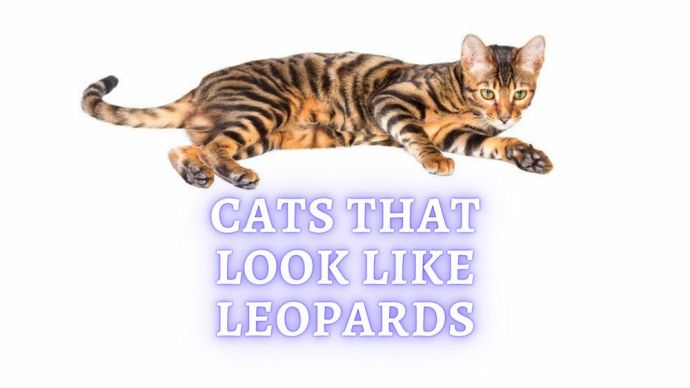 Cat Breeds Cats That Look Like Leopards: 10 Cat Breeds That Look Exactly Like Leopards
Cat Breeds Cats That Look Like Leopards: 10 Cat Breeds That Look Exactly Like Leopards - 512
- 0
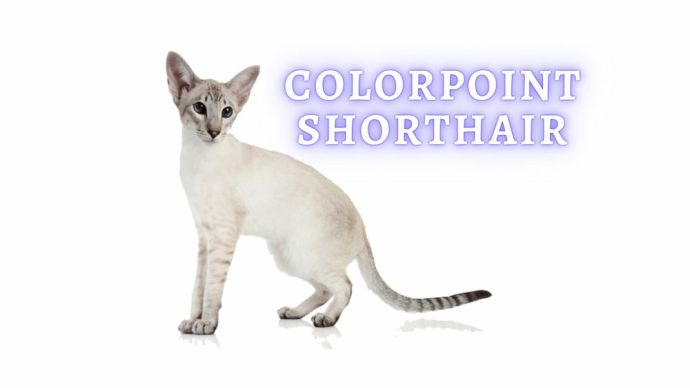 Cat Breeds Colorpoint Shorthair: Colorpoint Shorthair Cat Breed History, Temperament and Personality
Cat Breeds Colorpoint Shorthair: Colorpoint Shorthair Cat Breed History, Temperament and Personality - 241
- 0
 Cat Care Why Does My Cat Attack My Legs? 10 Reasons Why and What To Do About It (Vet-Approved Advice)
Cat Care Why Does My Cat Attack My Legs? 10 Reasons Why and What To Do About It (Vet-Approved Advice) - 45877
- 21
 Cat Veterinary Tips Cat Stomach Gurgling: Vet Advice on Why is Your Cat Stomach Gurgling?
Cat Veterinary Tips Cat Stomach Gurgling: Vet Advice on Why is Your Cat Stomach Gurgling? - 36182
- 4
 Cat Veterinary Tips My Cat Lost its Voice: Can Cats get Laryngitis? (Vet Advice)
Cat Veterinary Tips My Cat Lost its Voice: Can Cats get Laryngitis? (Vet Advice) - 23498
- 13









